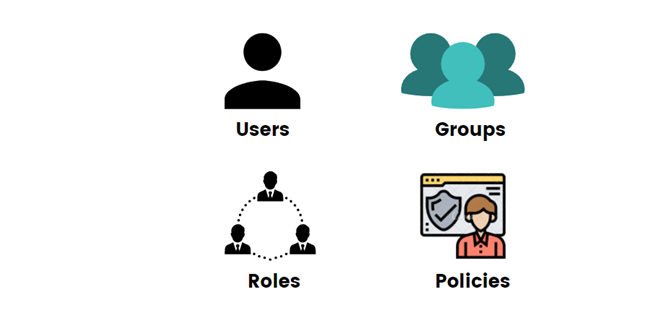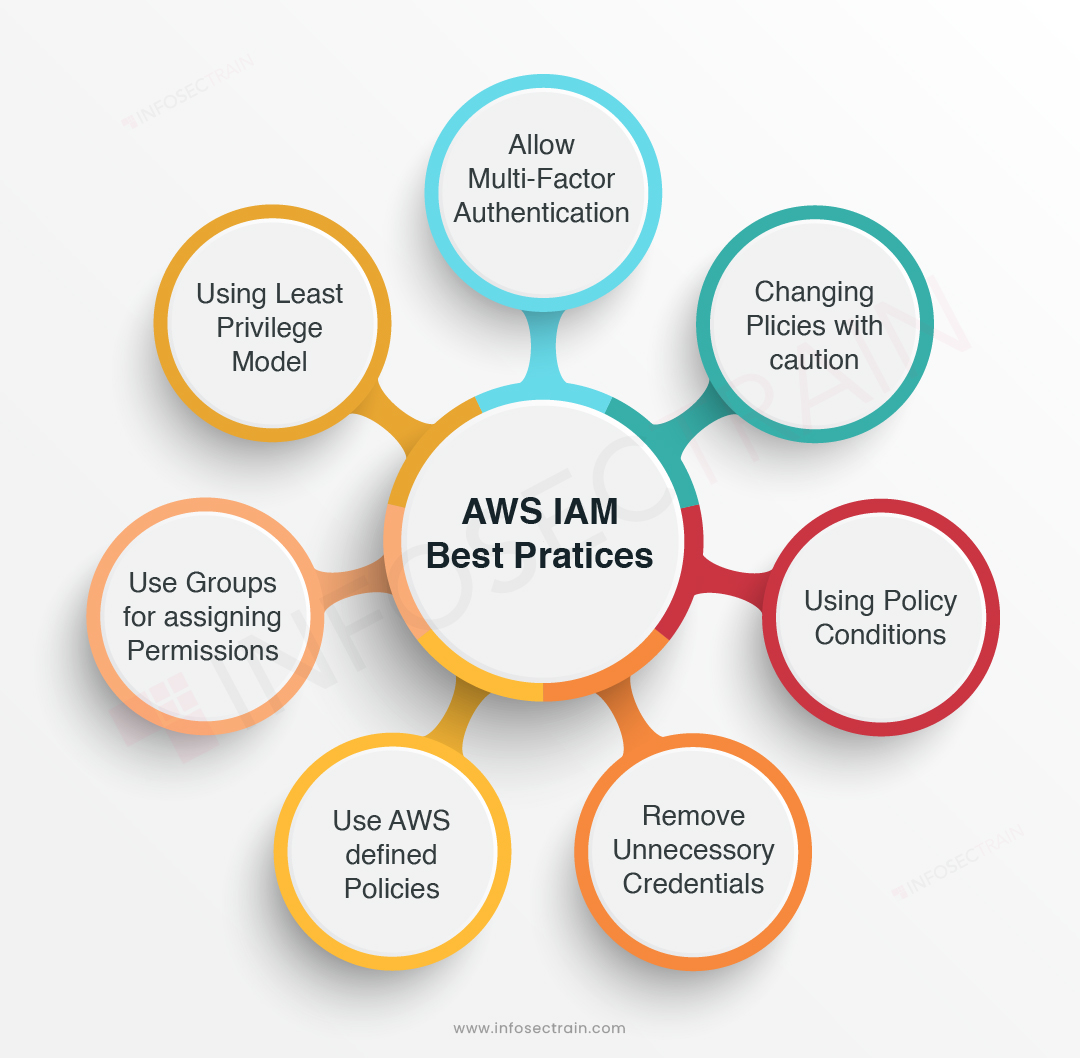Finest Approaches for AWS Identity & Access Management
Identity and Access Management is often abbreviated as IAM, and it’s an essential term that you’ll frequently encounter all across AWS. So, it is essential to have a reasonable comprehension of how it works. As the name implies, IAM is a permission framework that controls access to AWS services. It aids in defining who has access to what in an AWS account. Secondly, IAM users enable you to give groups of users or even individual users broad or specific permissions. Broad permissions can include items like granting access to an entire AWS service, such as DynamoDB, while specific permissions can include read and write access to a specific S3 bucket. Thirdly, IAM offers a method for monitoring and editing access to unique resources by enabling AWS Cloud Trail. Finally, those of you working in large corporations with current identity management systems would be happy to learn that AWS IAM will easily integrate with them.

How do AWS Identity and Access Management work?
In order to know how AWS IAM works, you must be familiar with the four basic concepts, which can be defined as:

- Users: Users are identifiable individuals, and with IAM, you can give each one login and password so they can access the AWS console on their own. However, they’ll have a restricted set of permissions that you specify. Users have secret keys and secret access keys, which are used as inputs in your application-level code when setting up clients.
- Groups: Then there are groups, which essentially apply to a collection of users that share a mutual interest. Permissions are different for different groups. Specific users of a group are subject to the same permissions and policies that are defined for the group as a whole.
- Roles: Then we have roles, which are similar to user accounts in AWS. We attach policies to roles as we do for the users. In AWS IAM, we provide the access permissions to roles instead of a user. If an instance wants to access an AWS account, we’ll make it a role so that it can access the account without a login id and password. Roles can also be used by an AWS service to access another VM.
- Policies: Finally, there are policies, which is an AWS object that determines the permissions of identity or resource when it is connected with it. When an IAM principal (user or role) makes a request, AWS evaluates these policies. They come in two variations: allow or deny. The policy permissions decide whether the request is allowed or denied.
AWS IAM Best Practices
Here are some best practices that must be followed while using IAM to secure your Cloud Infrastructure:

- Make use of the Least Privilege Model : You must provide the user with the bare minimum of permissions they need to complete their assignment. Don’t give people too many permissions because this could result in security flaws or people unintentionally deleting production database tables. So, using the least privilege model is a wise approach.
- For privileged users, allow multi-factor authentication (MFA): For protecting enterprise data and networks, strong passwords are important, but they aren’t enough. A breach in authentication causes the majority of attacks. Security experts widely recommend Multi-factor authentication. AWS also recommends that all privileged IAM users use multi-factor authentication. Users that have access to APIs or other sensitive tools fall into this category. AWS users have a few options for enabling the second level of authentication, including security token-based authentication and SMS authentication.
- When changing policies, use caution: It’s all too easy to change a policy without thinking about it, only to discover that one of your development applications was using it and suddenly lost access to a resource. Just be cautious when making changes to the IAM configuration in development.
- For added protection, use policy conditions: Policies are a series of JSON statements that grant users specific permissions. AWS has introduced an optional component called ‘Conditions’ to policies to provide more security. The condition block always returns a boolean output: ‘true’ or ‘false,’ indicating whether the request is granted or denied by the policy.
- Remove any credentials that aren’t needed: It is always recommended to audit user credentials regularly and remove them if they are no longer in use. AWS has a ‘credential report’ that allows you to monitor the lifecycle of passwords and access keys right out of the box. The report contains user information, the date the account was established, the last time the password was used, and the last time the password was changed. If you’ve set a password rotation policy, this report will also include the date and time that the user must change their password.
- Where possible, assign permissions using AWS-defined policies: If you’re new to AWS and have trouble creating and maintaining your own policies for various job functions, consider starting with AWS-defined policies wherever possible. These policies are well-aligned with a broad spectrum of traditional information technology roles. The auto-update functionality provided by AWS is a significant benefit of using these policies. Since these policies are modified whenever a new AWS service or API is released, they are still up to date. This saves a significant amount of time and makes life simpler.
- Assign Permissions to IAM Users Using Groups: Creating groups and assigning permissions to them is often simpler than defining permissions for individual users. This allows you to build several groups for different job functions and assign appropriate permissions to each group before assigning users to those groups. This way of handling permissions is not only more straightforward, it’s much safer and easier to handle.
AWS with InfosecTrain
AWS has proven to be a huge success for a variety of businesses all over the world. AWS services have been used by tech companies such as Facebook, Linked In, Netflix, and others to improve their business performance. Professionals are in high demand and well-compensated in the industry as a result of its extensive use. Join InfosecTrain to take the first step toward certification, as we are the leading training provider that will expose you to unique challenges. Our highly qualified and experienced trainers created the whole action plan and will guide you through the process of laying a solid AWS foundation and upskilling your skills to a proficient level.



 1800-843-7890 (India)
1800-843-7890 (India) 
